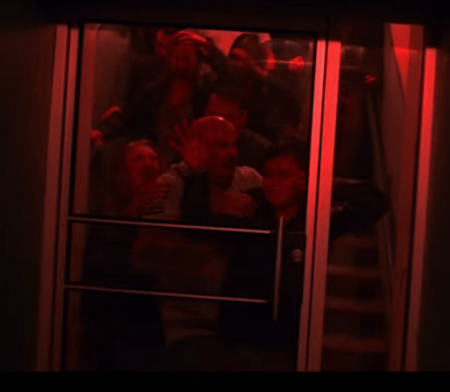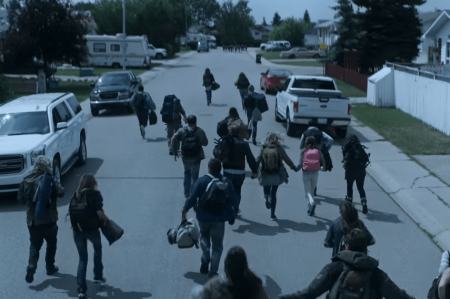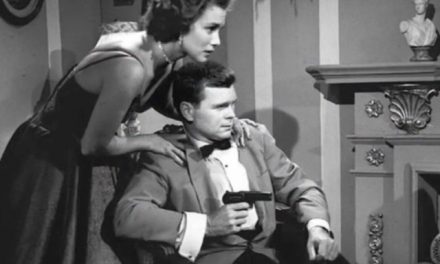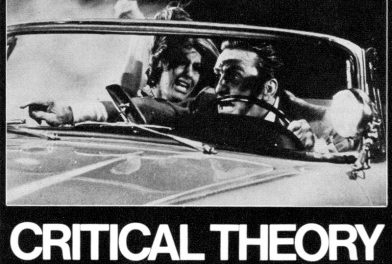Fast, frenetic and a breath of fresh air from the drawn out soul searching in other zombie apocalyptic shows, Black Summer (Netflix, 2019) is a stripped bare, full throttle zombie series that sprints through eight action packed episodes. Created by Karl Schaefer and John Hyams, Black Summer comes from The Asylum, the same studio which made Z Nation (SyFy, 2014 – 2018) but the connection between the two shows is minor. Fans of Z Nation will be aware of the characters referring to a period known as the Black Summer, when everything fell apart, infrastructure failed, and 95% of the world died. Black Summer on Netflix then, is a telling of one small pocket of that fateful chapter of the zombie apocalypse. Not a prequel, Black Summer (so far) has no intention of crossing over with the now cancelled Z Nation, but viewing Black Summer as a chapter certainly helps to understand how the show was put together and how it was intended to be watched.
Netflix ordered Black Summer as straight to series, and follows central character Rose as she is separated from and then tries to find her daughter. Set six weeks into the outbreak, chaos reigns with characters flung together, forming and reforming groups complete with cowards, heroes, backstabbers and quiet yet later brutally efficient zombie killers. So far, so standard. But what Black Summer offers which previous TV zombie series lack, is speed. Episode 1.1 ‘Human Flow,’ opens with an air raid siren howling over empty suburban streets, then we find ourselves with a family of three frantically packing rucksacks before they get on the move. The only dialogue heard from this and other families as they leave their houses and run towards to the echoing loudspeaker, consists of “hurry;” “move;” “come on;” “faster;” and “we gotta go.” These words of haste and speed set the feverish and hectic tone and structure for Black Summer.
Black Summer episodes are split into small titled segments, consisting of scenes filled with quick character beats. The segmented scenes are devoted to single characters or simple yet deadly problems, and the speed with which character motivations and actions shift and change happen so quickly, that the viewer has no time to consider the ramifications – either to the narrative or their sense of morality – before the series is sprinting off again, into the next titled segment. The balance of power within each segment repositions itself multiple times, as the characters bound along into increasing turmoil. That this speed of character beats and actions taken is so noteworthy, lies in the chasm of difference between Black Summer and other TV zombie shows. The Walking Dead for example, takes great pains to slow things down and to let the characters breathe. In stark contrast Black Summer speeds things right up. There is no time to think, only to act, creating a series that has a fast turnaround of key elements of a zombie text. Episode 1.4 ‘Alone,’ for example, sees Lance attempt the familiar shopping scene[i]. Lance does not even get two minutes into his trip round the grocery aisles, before an infected individual shatters his as the segment title calls it, ‘Oasis.’
The character turnaround moves at a sometimes alarming rate. While we expect central characters to die, Black Summer kills the father of the aforementioned family of three (Rose’s husband) at sixteen minutes into episode 1.1, and Barbara, a character worthy of her own introductory titled segment in 1.1, is killed and reanimated before the end of the second episode, 1.2 ‘Drive.’ The reanimation turnaround of the zombies occurs with deadly speed[ii]. Poor Barbara dies in a horrific car crash, and is up, screaming and running and attacking in seconds. In 1.6 ‘Heist,’ Carmen stabs a guard[iii] in the throat, and in the seconds that follow, he reanimates which causes the securely sealed and packed with people underground bunker, soon to become a seething mass of infected.

Black Summer, ep. 1.6 ‘Heist’: Turning people seeking refuge in an underground bunker into a seething mass of infected zombies.
Being made for Netflix, the length of the episodes is able to match the speed and chaos that the content of Black Summer perpetrates. The first episode is forty five minutes, the finale is a mere twenty. During the series, episode endings have no real cliffhangers, a structural consequence of the in-episode titled segments. Of course, Netflix can experiment with this kind of story driven episode length; creator Schaefer said himself that Black Summer is a piece to be worked through, it is a show designed to be binged. Black Summer has long spaces of little to no dialogue, only relying on visual storytelling and utterances of profanity. The zombies themselves are stripped back, bare versions of what a zombie is (or can) be. To look again to The Walking Dead and the detailed and complex prosthetic work on their ‘walkers,’ in comparison the ‘runners’ in Black Summer are only visually identifiable by their white-out contact lenses and plentiful Scab Blood around the mouth, down the chin and neck. There is no time for complex visual artistry on the zombies of Black Summer, they are too busy running their victims down and attacking them.
Black Summer is indeed less talk and more action. For some critics, the lack of backstory and character development leaves the show cold and empty, but I argue that is the crux and the joy of this show. Deep character development is suited to week to week episodic and more complex storytelling. Black Summer is a series that demands you get amongst the action and watch it as quickly as its characters have to think. There is no melodrama, no overthinking, no real complexity, just zombie driven chaos.
Lets think further about Black Summer being made for and ordered by Netflix, might Netflix be working to build their own zombie canon? The previous zombie offering, The Kingdom (Netflix, 2019) set in feudal Korea, like Black Summer brought something new to the wider world of zombie content. The Kingdom brought an unseen to zombie texts a beautifully rich and colourful palette, with exquisite costume and detailed historical set design. The zombies inThe Kingdom too were something a little different – they slept in the daytime[iv], for season 1 at least. The finale teased that that might be about to change. Then here we have Black Summer, with little to no character development and instead a focus on action. We are all familiar with zombies serials now, and the makers of Black Summer did tip their hats to the big brother of the TV zombie. Schaefer (who also created Z Nation) said “We’ve always been the stepchild of The Walking Dead [and on Black Summer said] we wanted to do something where we set out to go, ‘we want the real scary, old school back-to-basics, run-your-ass-off zombie show” (Rawden, Cinemablend, 2018). It seems that Netflix are offering alternatives to the now standard zombie serialization. Netflix are telling us that we do not need to worry about attachment to characters, or drenching the show in an apocalyptic looking, dreary blue and grey cool colour palettes. The zombie apocalypse can be warm and beautiful, it does not need excessive melodrama, or as we can see in Black Summer, it can go back to being downright dangerous again.
Stella Gaynor is an Associate Lecturer at The University of Salford in the Arts and Media Department, teaching on the BA(hons) Television and Radio programme. She has submitted her thesis titled Made For TV Monsters: How has the rise of horror on US television affected the spectacle and acceptability of the genre? She has written a chapter on the global spread of The Walking Dead and FOX International Channels in the forthcoming book Global TV Horror, edited by Stacey Abbott and Lorna Jowett.
Footnotes:
[i] From Dawn of the Dead (Romero, 1978; Snyder, 2004), to 28 Days Later (Boyle, 2001) and several episodes of The Walking Dead (AMC, 2010 – ), the characters will find themselves able to stock up on supplies and / or go shopping. Usually this is a moment of peace for a group, a brief pocket in which they can breathe, stock up, and remember some of the nice things from the world before.
[ii] Now, I’ve not timed it but I would say that these zombies / infected unfortunates are up and at ’em quicker than in 28 Days Later.
[iii] She appears to know him, and stabs him on the ground of what looks like revenge. I suspect this revenge is for rape, and that appears to be a regular occurrence in the trap house / outpost in which this episode is set.
[iv] Echoing the creatures in Matheson’s I Am Legend.








